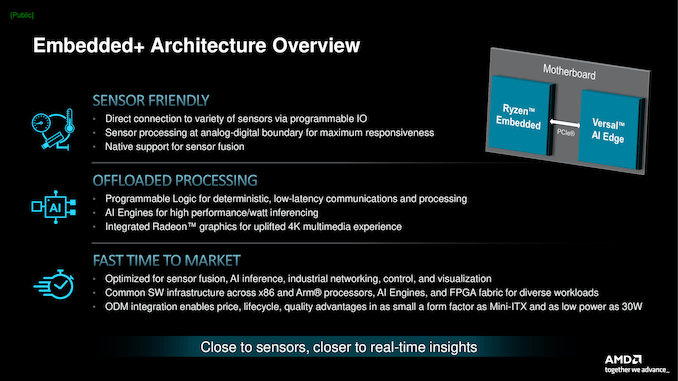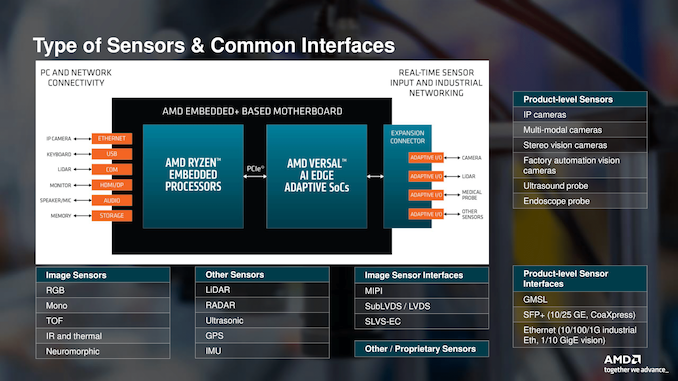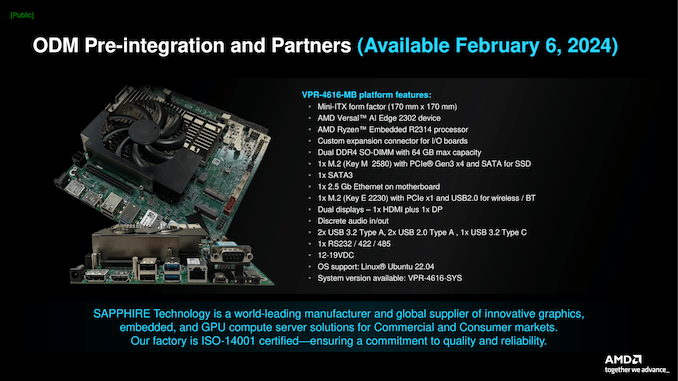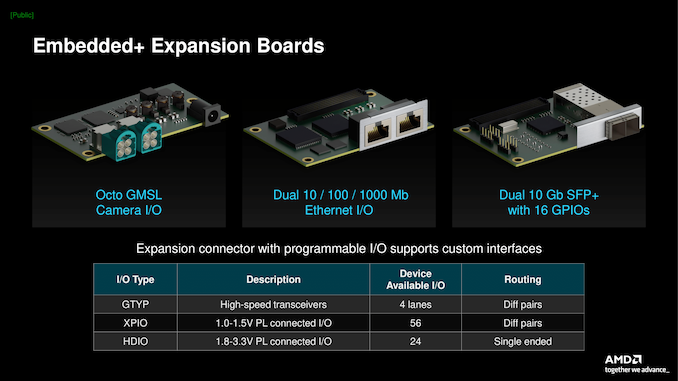One location of AMD’s item portfolio that does not get as much attention as the desktop and server parts is their Embedded platform. AMD’s Embedded series has actually been very important for on-the-edge gadgets, consisting of commercial, vehicle, health care, digital video gaming devices, and thin customer systems. Today, AMD has actually revealed their most current Embedded architecture, Embedded+, which integrates their Ryzen Embedded processors based upon the Zen+ architecture with their Versal adaptive SoCs onto a single board.
The Embedded+ architecture incorporates the abilities of their Ryzen Embedded processors with their Versal AI Edge adaptive SoCs onto one packaged board. AMD targets essential locations that need great computational power and power effectiveness. This synergy makes it possible for Embedded+ to deal with AI inferencing and handle complicated sensing unit information in real-time, which is important for applications in vibrant and requiring environments.
Providing ODMs the capability to have actually both Ryzen Embedded and their Versal SoCs onto a single board is especially advantageous for markets needing low-latency action times in between software and hardware, consisting of self-governing cars, diagnostic devices in health care, and accuracy equipment in commercial automation. The AMD Embedded+ architecture can likewise support different work throughout various processor types, consisting of x86 and ARM, in addition to AI engines and FPGA material, which uses versatility and scalability of ingrained computing options within markets.
The Embedded+ platform from AMD uses lots of compatibility with different sensing unit types and their matching user interfaces. It assists in direct connection with basic peripherals and commercial sensing units through Ethernet, USB, and HDMI/DP user interfaces. The AMD Ryzen Embedded processors within the architecture can deal with inputs from conventional image sensing units such as RGB, grayscale, and even advanced neuromorphic types while supporting industry-standard image sensing unit user interfaces like MIPI and LVDS.
Additional improving its ability, the AMD Versal AI Edge adaptive SoCs on the Embedded+ motherboard use versatile I/O alternatives for real-time sensing unit input and commercial networking. This consists of interfacing with LiDAR, RADAR, and other fragile and advanced sensing units required for modern-day ingrained systems in the commercial, medical, and vehicle sectors. The platform’s assistance for different product-level sensing unit user interfaces, such as GMSL and Ethernet-based vision procedures, suggests it is developed and all set for combination into complex, sensor-driven systems.
AMD has actually likewise revealed a brand-new pre-integrated option, which will be offered for ODMs beginning today. The Sapphire Innovation VPR-4616-MB platform is a compact, Mini-ITX kind element motherboard that leverages the AMD Versal AI Edge 2302 SoC integrated with an AMD Ryzen Embedded R2314 processor, which is based upon Zen+ and has 4C/4T with 6 Radeon Vega calculate systems. It includes a customized growth adapter for I/O boards, supporting a large variety of connection alternatives, consisting of double DDR4 SO-DIMM slots with as much as 64 GB capability, one PCIe 3.0 x4 M. 2 slot, and one SATA port for traditional HDDs and SSDs, The VPR-4616-MB likewise has a great variety of networking abilities consisting of 2.5 Gb Ethernet and an M. 2 Secret E 2230 PCIe x1 slot for a cordless user interface. It likewise supports the Linux-based Ubuntu 22.04 os.
Likewise revealed is a series of growth boards that considerably widen assistance for the Embedded+ architecture. The Octo GMSL Electronic camera I/O board is especially notable for its capability to user interface with several video cameras all at once. It is unquestionably ideal for high bandwidth vision-based systems, important to sectors such as sophisticated driver-assistance systems (ADAS) and automated monitoring systems. These systems typically need the combination of various image inputs for real-time processing and analysis, and the Octo GMSL board is crafted to satisfy this need particularly.
In addition, a double Ethernet I/O board is offered, efficient in supporting 10/100/1000 Mb connections, dealing with environments that require high-speed network interactions. The Double 10 Gb SFP+ board has 16 GPIOs for even greater bandwidth requirements, supplying adequate information transfer rates for jobs like real-time video streaming and massive sensing unit information aggregation. These growth alternatives widen the scope of what the Embedded+ architecture can in an edge and commercial circumstance.
The Sapphire VPR-4616-MB is offered for clients to acquire now and in a total system setup, consisting of storage, memory, power supply, and chassis.



